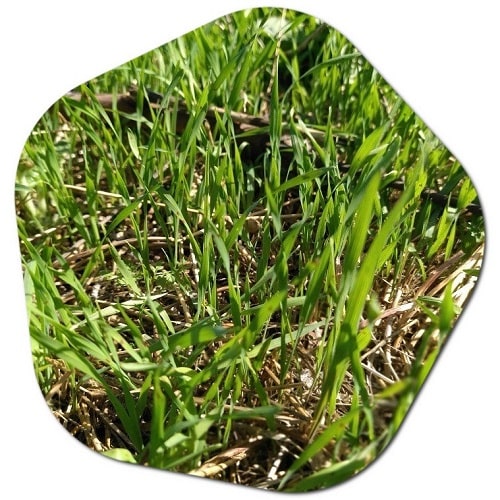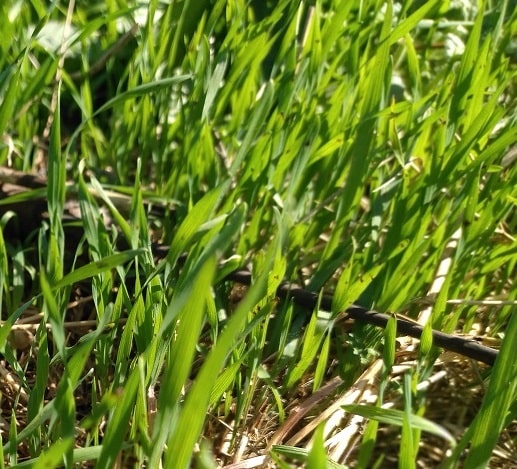Lawn care in winter requires a more diligent approach due to cold weather, frost, snow and other adverse weather conditions. Leaf Cleanup: Pick up fallen leaves regularly. This allows the lawn to breathe and prevents the development of fungi or diseases. Cutting: Cut the lawn shorter in late fall, but make sure to follow your guidelines about cutting height. Cutting your lawn too short in winter can cause damage due to cold weather and frost.
Frost Damage: When frost is expected, cover your lawn with a cover or tarpaulin. This protects the lawn from frost damage. Protecting your lawn during the winter is important to ensure it survives the cold weather and emerges healthy in the spring. Here are some steps you can take to protect your lawn during the winter:
- Keep It Clean:
- Remove leaves, sticks, and other debris from your lawn. These can smother the grass and create an environment for pests and diseases to thrive.
- Mow Properly:
- Before the winter season, give your lawn a final mowing at a lower height than usual. This helps prevent the grass from matting down under the weight of snow and ice.
- Aerate the Soil:
- Aerating your lawn in the fall allows better air and water penetration, helping the grass roots stay healthy during the winter.
- Fertilize:
- Apply a balanced, winter-specific fertilizer in the late fall. This provides nutrients that the grass can use during the winter and promote early spring growth.
- Control Weeds:
- Weeds can compete with your grass for nutrients and sunlight. Apply weed control measures in the fall to reduce weed growth during the winter.
- Overseed:
- If your lawn has thin or bare patches, consider overseeding in the fall. This can help thicken the grass and make it more resilient during the winter.
- Water Properly:
- Make sure your lawn is well-hydrated going into winter. Continue to water as needed until the ground freezes, but be cautious not to overwater, as excess moisture can lead to diseases.
- Protect Against Snow Mold:
- Snow mold is a fungal disease that can affect grass during the winter. To prevent it, avoid excessive thatch buildup and keep the lawn clear of debris.
- Avoid Heavy Traffic:
- During the winter months, try to avoid walking or driving on the frozen grass. This can damage the frozen blades and lead to dead spots in the spring.
- Snow Removal:
- When it snows, avoid using heavy equipment or shovels with sharp edges on your lawn. Use a snow blower or a soft-edged shovel to clear snow, being careful not to damage the grass beneath.
- Protect Against Animal Damage:
- If you have issues with animals like deer or rodents damaging your lawn during the winter, consider using protective measures such as fencing or repellents.
- Monitor Soil Temperature:
- Keep an eye on the soil temperature, as grass can continue to grow slowly during mild winters. If the temperatures are above freezing, consider a light mowing to prevent the grass from getting too long and matting down.

Remember that the specific actions you need to take can depend on your location and the type of grass you have. Different grass varieties have different requirements, and the severity of winter can vary greatly by region. Be sure to consult with local gardening experts or your county extension office for guidance specific to your area.
Should I put anything on my lawn in winter?
Caring for your lawn in the winter largely depends on your local climate and the type of grass you have. Here are some general tips for winter lawn care:
- Mow at the Right Height: Before winter sets in, give your lawn a final mow at a slightly lower height than you do in the summer. This prevents the grass from matting down under snow and allows for better air circulation.
- Aerate: If your lawn experiences heavy foot traffic or compaction issues, consider aerating it in the fall. Aerating helps improve soil aeration and drainage.
- Fertilize: Apply a winterizing fertilizer in the late fall. These fertilizers are designed to promote root growth and prepare the grass for the winter months.
- Rake Leaves: Keep your lawn clear of leaves and debris. Piles of leaves can smother grass and promote disease.
- Snow Removal: If your area receives heavy snowfall, make sure to shovel or snow-blow your driveway and walkways but be careful not to pile excessive snow on your lawn, as this can damage the grass underneath. If possible, use de-icing products that are less harmful to your lawn.
- Keep Off the Lawn: Try to avoid walking or driving on your lawn when it’s covered with snow. Foot traffic can compact the soil and damage the grass underneath.
- Monitor for Pests and Diseases: Even in the winter, some pests and diseases can affect your lawn. Keep an eye out for signs of problems and address them as necessary.
- Watering: In some regions, it’s essential to provide your lawn with some water during the winter if there’s a prolonged dry period. Ensure the ground doesn’t completely dry out.
- Winterize Equipment: If you have lawn care equipment, like lawnmowers or trimmers, make sure they are properly winterized and stored to prevent damage.

It’s important to tailor your lawn care to your specific climate and grass type, so consider consulting a local gardening expert or cooperative extension service for region-specific advice. If you’re unsure about the specific needs of your lawn, it’s always a good idea to consult with a local lawn care professional or your county’s cooperative extension service for guidance.
How do I protect my grass from the cold?
Protecting your grass from the cold is important, especially if you live in an area with cold winters. Cold temperatures, frost, and freezing can damage or kill your grass, leaving your lawn in poor condition come spring. Here are some steps you can take to protect your grass from the cold:
Fertilize: In the fall, apply a winterizing fertilizer that is high in potassium to help your grass store energy for the winter. This will make your grass more resilient to cold temperatures.
Aerate the soil: Aerating your lawn in the fall helps improve air circulation and water penetration into the soil. This can help reduce the risk of frost heave, which occurs when freezing and thawing cycles push grass and soil up and out of the ground.
Keep your grass mowed: Before winter sets in, mow your grass to its recommended height for the last time. Cutting it slightly shorter can help prevent disease and pests during the winter, but avoid scalping it too short, as this can damage the grass.
Rake leaves and debris: Remove leaves, sticks, and other debris from your lawn. A layer of leaves can trap moisture and create an environment conducive to fungal diseases, which can harm your grass.
Water the lawn: Continue to water your lawn as needed until the ground freezes. Well-hydrated grass is less susceptible to damage from cold weather. Make sure to water in the morning to allow the grass time to dry before nighttime, which reduces the risk of disease.
Avoid heavy foot traffic: Try to minimize foot traffic on your grass during the winter months, as walking on frozen or frost-covered grass can cause damage.
Overseed: In the fall, consider overseeding your lawn with cool-season grass varieties that are more cold-resistant. This can help your lawn stay green and healthy during the winter.
Protect against snow mold: Snow mold is a fungal disease that can affect grass under snow cover. To prevent this, avoid piling excessive snow on your lawn when shoveling or plowing, and keep the lawn clear of debris before winter.
Cover the grass: If you have particularly sensitive grass or expect extremely cold temperatures, you can use burlap, frost cloth, or straw to cover your lawn. Be sure to remove the covering during the day to allow the grass to receive sunlight.
Avoid excessive salt usage: When de-icing your sidewalks and driveways, try to use salt sparingly. Excess salt can damage your grass, so be mindful of where and how you apply it.
Remember that the specific care your grass needs will depend on your location and the type of grass you have. It’s a good idea to consult with a local gardening or lawn care expert for advice tailored to your region and grass type.
